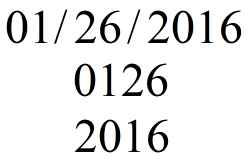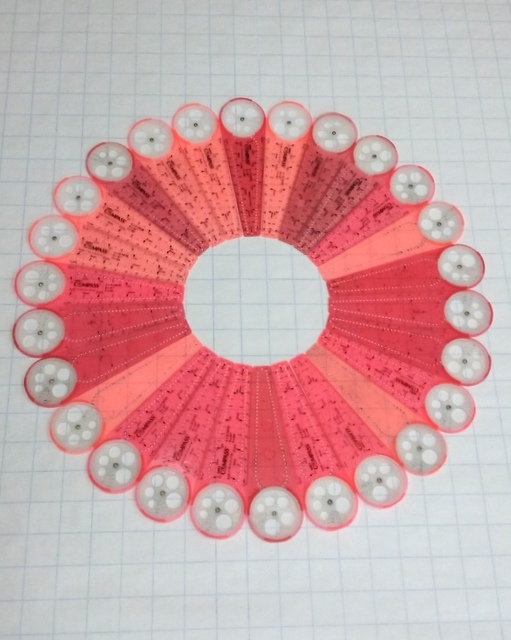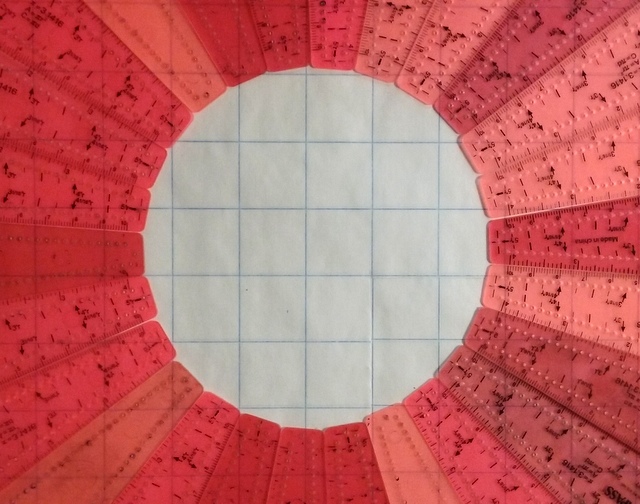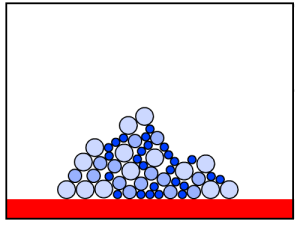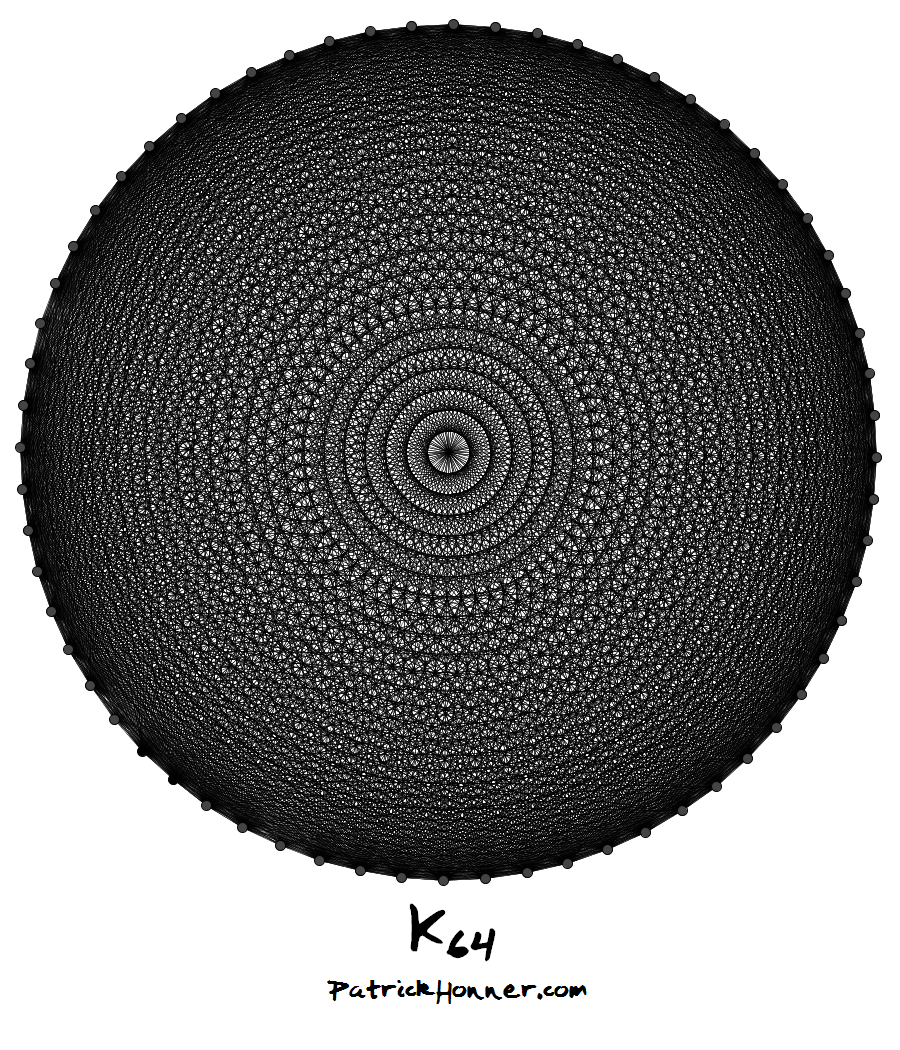A local Office Max is going out of business and is having a very interesting sale.
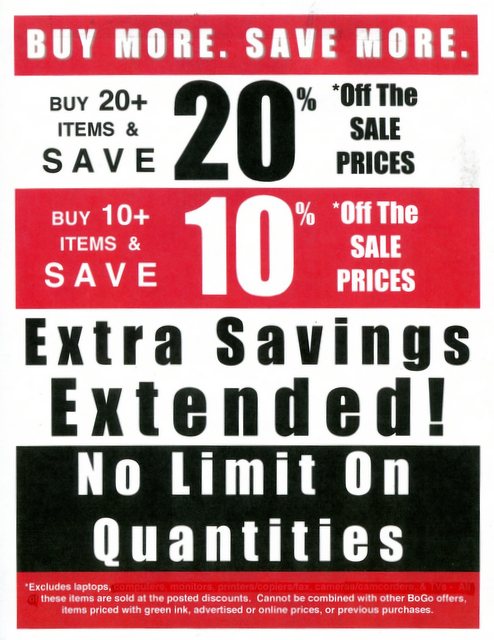
I’m not sure I’ve ever seen a sale where you earn a discount by purchasing a certain number of items. Of course, I immediately began exploring the mathematical consequences of the policy.
The first thing that occurred to me was that you can essentially purchase a 20% discount. Say you need to buy n items. Simply buying another 20 – n items earns you a 20% discount. The natural question is thus, “Under what circumstances would buying an additional 20 – n items be worth a 20% discount?”
There are a variety of factors to consider. For example, if you can just find an additional 20 – n items that you are happy to buy, it’s definitely worth it: you get the 20% discount, and you get items of value to you. Also, the answer likely depends on n: if you are only 1 item short of the discount, it’s easier to justify an unnecessary purchase than if you are, say, 19 items short.
As an extreme case thinker, I considered the following scenario. Suppose I wanted to buy one item; under what circumstances would I buy 19 items I didn’t want in order to get a 20% discount?
Obviously, the key to this strategy is finding a cheap item to purchase 19 times. I thought I had found the cheapest possible item here:

Nineteen composition books would cost me $14.06. If the 20% discount saved me more than $14.06, this strategy would be worth it. This sets the bar for my one item at $70.30.
However, I later realized I could do better here:
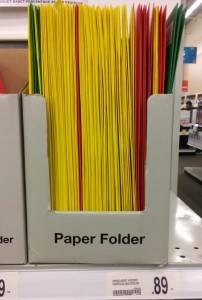
These paper folders cost more per item, but unlike the composition books above, the folders are themselves eligible for the 20% discount! Nineteen folders would cost $16.91, but they’ll be discounted 20% to $13.53. This means if my single item cost more than $67.65, this strategy would save me money.
I could have done a lot better if these Slim Jims were sold here, or these 10-cent envelopes! But this is the best I could find in the store.
Another interesting question to consider is “For what range of prices would buying nine additional items, to receive a 10% discount, be a better strategy than buying 19 additional items, to get the 20% discount?”
In any event, I appreciate Office Max giving me something interesting to think about as I waited in line. And as usual, I waited a very long time. Let’s just say it’s no surprise they are going out of business.
